Democratic Republic of the Congo
The Democratic Republic of the Congo is a country in Central Africa. It is the fourth most populous country in Africa (behind Nigeria, Ethiopia and Egypt) as well as the most populous French-speaking country.The country is also more simply called Congo, or more often DRC, Congo-Kinshasa or DR Congo to differentiate it from the neighboring Republic of Congo, itself called “Congo-Brazzaville” for the same reason. From 1908 to 1960, this former colony was called Belgian Congo but also “Congo-Leopoldville” until 1966, when the capital’s name changed to Kinshasa. With Zairianization, the country was called Zaire from 1971 to 1997.
The DRC is the second largest country in Africa after Algeria. It extends from the Atlantic Ocean to the eastern plateau and corresponds to most of the Congo river basin. The north of the country is one of the largest areas of equatorial forest in the world, the east of the country borders the great East African rift, domain of mountains, hills, Great Lakes but also volcanoes. The south and the center, the domain of wooded savannahs, form a high plateau rich in minerals. In the far west, some 40 kilometers north of the mouth of the Congo River stretches out over the Atlantic Ocean. The country shares its borders with the enclave of Cabinda (Angola) to the west-southwest, the Republic of Congo to the west, the Central African Republic to the north, South Sudan to the northeast, Uganda to the east-northeast, Rwanda and Burundi to the east, Tanzania to the east-southeast, Zambia to the southeast and Angola to the southwest. The DRC has been a member of the International Organization of La Francophonie since 1977.
Several hundred ethnic groups make up the country’s population; French is the official language and four Bantu languages (Lingala, Kikongo, Swahili and Tshiluba) have the status of national language. The economy is mainly based on the primary sector (agriculture and mining).
The country is unstable and, after two civil wars, it has seen several militias resurface since 2016.
Democratic Republic of the Congo ‘s history
Prehistory
The oldest traces of settlement in the Congo are associated with a pre-Acheulean, discovered on the archaeological sites of Mulundwa in Katanga, Katanda and Sanga in Kivu. The cut pebbles or choppers have an estimated age of more than 200,000 years, without it being possible to be more precise today.
The territory of the Democratic Republic of Congo was formerly populated only by hunter-collectors, perhaps partly ancestors of the current Pygmy peoples. Between the footsteps of a pre-Acheulean and the arrival of the first villagers, the Congo will always be occupied by nomadic groups, hunter-collectors, stonemasons, from different cultures.
The Acheulean is attested by numerous isolated discoveries of bifaces and choppers as well as by the site of La Kamoa in Katanga.
During the second millennium BC. AD, the north of equatorial Africa saw a wave of migrations of food-producing populations, Neolithic, speaking for some of the Bantu languages. Between –3500 and –2000, a first village occupation, the epicenter of which was in southern Cameroon, resulted in the installation of a neolithic production mode in the north and west of central Africa. In Congo, the first traces of these populations materialize around –2600 by the so-called “Imbonga tradition” near Mbandaka and Lake Tumba, and by the “Ngovo tradition” in Bas-Congo from –2300. On the other side of the country, in Kivu, we see the emergence of villages of the “Urewe tradition”. These villages are only the western extension of food producing communities, metallurgists, settled mainly in Uganda, Rwanda, Burundi, western Kenya and Tanzania; the oldest traces are dated to –2600.
Iron metallurgy develops independently at these installations, the oldest traces are found in central Africa to the northwest (south Cameroon and Bouar area in the Central African Republic), and to the northeast (interlacustrine region). In Congo-Kinshasa, iron is not known in the region occupied by the Imbonga tradition; it was only later, between the 7th and 5th century BC. AD that we will work this metal (sites of Pikunda and Munda). Around the same time, the lower Congo experienced its first iron production activities as part of the Kay Ladio tradition which followed Ngovo tradition in time. In Kivu, as soon as the first village communities are installed, it is likely that iron is present, as attested by the many well-known iron reduction furnaces in Rwanda and Burundi. Later, as German research on the tributaries of the Congo river indicates, these first populations will slowly colonize the heart of the equatorial forest by following the axes of rivers from downstream to upstream; Spanish work in Ituri suggests that it takes –800 to meet the first villages in certain areas of the forest.
Kingdoms and empires Towards the end of the Middle Ages, different populations, then organized as chiefdoms, built themselves up in kingdoms (luba, kuba, lunda, kongo, etc.) which, for some, saw their peaks correspond to the first contacts with Europeans of the fifteenth century. This period was marked by different merchant kingdoms, trading with the slavers on the coast and between them within the continent. Certain kingdoms extend over several thousand kilometers and have commercial networks beyond their borders. The trade is done by portage or waterway. These populations did not know private property, the land cultivated in a group was not sold, the different kingdoms did not have exact borders (the territory of a small ethnic group included approximately 5,000 km2). the same chiefdom help each other free of charge. Unwritten science is passed on from generation to generation, with children having to take on the same job as their parents. Kings or emperors have no real power. Rather, it is the village chiefs who have authority. The kingdoms are rather the result of temporary unions of different groupings of villages of the same language to defend themselves against a neighboring ethnic group.
The black slave trade on the west coast, from the 15th to the 19th century, extended to the interior of the continent and corresponded, with the ivory trade, to the economic development or the decline of the various kingdoms. On the west coast, it ended in the middle of the 19th century. On the other hand, at that time, in the east of the country, today Ituri and Kivu, the Arabo-Swahili, coming from Zanzibar, did not content themselves with buying slaves from the natives, they founded sultanates. From 1870 these sultans extended their hold to the Congo Basin, and founded cities such as Nyangwe or Kasongo there. In 1890, the area under Arab influence covered more than a third of the territory of the Congo.
Colonization Precolonial period Europeans were confined to the coastal regions of the country until the mid-19th century. 1482: the Portuguese Diogo Cão, in search of the mythical “Kingdom of the priest John”, reaches the mouth of the Congo river. 1579: the Portuguese Duarte Lopes is the first westerner to go up the Congo river. 1874-1877: exploration of the Congo river by Henry Morton Stanley 1876: foundation of the International African Association (AIA) by Leopold II of Belgium. 1879: Stanley returns to the Congo to found a chain of AIA / AIC stations Congo Free State (1885–1908)
The borders of the present democratic republic of the Congo were recognized at the end of the Berlin conference which was held from November 1884 to February 1885. On August 1, 1885, Leopold II of Belgium accepted sovereignty over the state independent of Congo. The term “independent” means that all colonial powers are guaranteed free access. The specificity of this colonial regime lay in the fact that initially the Congo was considered as a personal and private possession of the king. Managed in a commercial form, the Congo is divided into two parts: one constituting the domain of the crown and the other attributed to private companies in the form of concessions.
The abundant wealth (rubber, ivory, mines, etc.) of the Congo encouraged the crown and the concessionary companies to undertake the brutal exploitation of its population. This fell by half between 1880 and 1926, to the point that some historians refer to this period as a “forgotten holocaust”.
In 1894 ended the campaign waged by the Belgians against the Arab Sultans who trafficked in slaves.
In 1904, a report by the British consul in Boma denounced the excessive chores imposed on the natives for the production of rubber.
Belgian Congo (1908–1960)
In 1908, the Belgian parliament, which had supported by credit and by sending troops the enterprise of colonization of the king of the Belgians, accepted the transfer from Congo to Belgium following notably certain criticisms of the English press Saxon concerning the management of the king’s representatives in the Congo. Leopold II, king of the Belgians, cedes the EIC to Belgium, which administered the colony under the name of Belgian Congo until its independence. A colonial charter was published for the management of the Congo, but scandals in the Belgian press soon broke out. Forced labor was used. During the First World War, the police force contributed victoriously to the war in Cameroon and in German East Africa by the victory of Tabora. In 1928, the episcopate protested against abuses in the recruitment of indigenous labor. In 1940, the Congo went to war on the side of the Allies. The police force won the victories of Saïo and Asosa against the Italian forces of Abyssinia. Some of his elements will go to fight in Egypt and Palestine. In 1948 Lovanium University was created. As early as the 1940s, in what was then Belgian Congo, two major independence trends were manifesting in the capital Léopoldville: that of “people from below” (Bas-Congo and Bandundu) speaking kikongo and that of “people of ‘upstairs’ speaking Lingala, coming from Ecuador first and finally from all over the interior of the country.
In the first category was formed in 1949 a first cultural and finally political association, the Alliance of Bakongo (ABAKO), of which Joseph Kasa-Vubu became president in 1954. His dream became to restore the ancient kingdom of Kongo of the Portuguese era, in fact that of the Bakongo. This trend hardened very quickly and soon called for immediate independence while remaining federalist when it came to discussing the problem of the rest of the Congo. The populations “from above”, coming from more diversified regions and seduced by the “30 year plan for the emancipation of Africa” of the Belgian Professor Jef Van Bilsen, published in 1956, were also eager to maintain the great Unitarian Congo. Their manifesto in this sense for the African conscience, published on July 1, 1956 under the leadership of Joseph Ileo, was vigorously opposed by the ABAKO at its general assembly on August 23, 1956. The 30-year plan was declared utopian: “nationalization large food and agricultural companies such as parastatals is desirable. Since the time has come, immediate independence must be granted today! ” In 1957 the first municipal elections were held in three cities in the Congo.
Belgium, which believed in the progressiveness of the transition to independence organized the first elections at the municipal level, limited to large cities in 1957. The ABAKO inevitably triumphed in Léopoldville and this impressed certain unitarists, such as Patrice Lumumba, a Tetela of Kasai, intelligent and idealist, who wasted no time in founding his own “national Congolese movement” MNC-Lumumba, more demanding than that of the MNC-Kalonji, Albert Kalonji also being a unitarian Kasai. These young political rivalries confronted with the complicated tribal structures of the Congo were going to form an explosive mixture which would destroy after five years the first Congolese parliamentary democracy. We can only recall here some salient episodes: On 4–7 January 1959, the late ban on an ABAKO rally provoked riots in Léopoldville, the repression of which officially killed 47 and 241 wounded among the Congolese. The actual death toll could be between 200 and 300. On January 13, government declaration announcing the Belgian intention to quickly achieve the independence of the unitary Congo. ABAKO rejects this statement two days later. In October, gendarmes opened fire during an MNC demonstration, leaving 30 dead and hundreds injured.
The rest of 1959 first saw the authorization of the Congolese parties, followed by general elections throughout the Congolese territory marked by all kinds of maneuvers by these parties from which three poles emerged: a Cartel of federalist nationalists formed of 6 separatist or autonomist parties including ABAKO and MNC-Kalonji, the pole of MNC-Lumumba and finally that of the strong man of Katanga, Moïse Tshombé, aware of the economic strength of his region and the interest reach an agreement with the Haut Katanga Mining Union (like Kalonji vis-à-vis the diamond operations in Kasai). Among the emerging parties are the PSA (Antoine Gizenga Solidarity Party), the PNP (National People’s Party led by Albert Delvaux and Laurent Mbariko) The LUKA (The Kwangolese Union) by André Petipeti Tamata and Pierre Masikita. From January 20 to February 20, 1960, it was the Brussels Round Table which fixed June 30 following the independence of the Congo, and where Congolese and Belgian representatives fixed the following stages: In May the legislative elections took place. The first chamber of deputies designates André Petipeti Tamata as the first president of the chamber of representatives by lot. He directs the provisional office to validate the mandates of the elected deputies and the final election of the office. The legislative and provincial elections marked new cleavages and alliances (split of ABAKO) from which resulted a compromise: Joseph Kasa-Vubu was elected President by the Parliament, Lumumba being Prime Minister. At the time of the country’s independence, the King of the Belgians went in person to Léopoldville (future Kinshasa) to attend the ceremonies consecrating the end of the colonial union between Belgium and the Congo, and marking the birth on the international scene of this new Francophone State (official language) of Africa.
Republic of the Congo (1960–1964)
On June 30, 1960 the independence of the Belgian Congo was proclaimed as “Republic of the Congo” Joseph Kasa-Vubu, President; Lumumba Prime Minister. At the same time, the former neighboring French colony of the Middle Congo also adopted the title of “Republic of the Congo” at its independence, on August 15, 1960. The two countries differed by adding the name of their capital to the name of the country (Congo-Leopoldville, Congo-Brazzaville) . In the army of the newly independent state, whites retain power. The radio then accused the former settlers of plotting against the new state, which angered the bangala and baluba soldiers who began to persecute the white community. Belgium then threatened to intervene militarily. On July 11, 1960, the dignitaries of Katanga, under the leadership of Kapenda Tshombé Moïse and at the instigation of a few Belgian settlers, proclaimed the independence of the State of Katanga, in a state of secession since June. The Katanga authorities then create their own currency and their own police. The UN offers its mediation and Lumumba requests the arrival of peacekeepers.
On August 20, 1960, South Kasaï seceded, which had also proclaimed its independence before the independence of the rest of the Congo, on June 14, 1960. Thus, the central government lost its two mining provinces. The UN orders Belgium to withdraw its troops, but, after several conflicting resolutions, rejects the military option and describes the conflict in Katanga as “internal conflict”. On August 12, Belgium signed an agreement with Tshombé, de facto recognizing the independence of Katanga. While Lumumba decides to react by sending troops to retake the region, the UN returns to its original position and militarily imposes a cease-fire, preventing the entry of Congolese troops. In a telegram dated August 26, CIA director Allen Dulles told his agents in Leopoldville about Lumumba: “We have decided that its remoteness is our most important objective and that, under the current circumstances, it deserves great priority in our secret action ”. On September 2, 1960, Prime Minister Lumumba called on the Soviet Union for help. September 5-14, fight between Joseph Kasa-Vubu and Lumumba. The Baluba and Bangala soldiers are not represented in the government, so they commit a coup and overthrow the Prime Minister. Within the army, which has become completely African, General Mobutu Sese Seko takes the reins and installs a government of commissioners. Mobutu was soon supported by the United States, which took a dim view of Lumumba’s socialism. Western media indeed point to Lumumba and hail the Katangese secession as the only bulwark of individual freedom against statism.
On January 17, 1961, Lumumba was assassinated, he had been deported to Katanga by Mobutu. In 1962, the central government set out to reconquer the secessionist provinces. Once Lumumba eliminated, the resumption of Katanga (renamed in 1971 Shaba Province) and South Kasai will mark the beginning of the rise of General Mobutu Sese Seko. UN troops, initially immobile, will suddenly go on the offensive with Mobutu’s troops to reconquer the two rebel provinces. In January 1963, the Katangese secession ended.
Democratic Republic of the Congo under Mobutu (1965–1997) Early years (1965-1971) 1964: the title “democratic republic of the Congo”, a new flag and a new currency are adopted on August 1, 1964 at the time of the proclamation of the new constitution, known as constitution of Luluabourg, adopted by referendum on July 10 preceding. 1965: the Congo is pacified, all tribal, ethnic revolts or supporters of Lumumba are put down. November 24-25, 1965: Mobutu Sese Seko overthrows Joseph Kasa-Vubu and seizes power definitively. The liberation of Stanleyville marked the beginning of the war years which continued until 1966. The whole region saw atrocities which left at least 500,000 civil and military dead. It will take the intervention of foreign troops to end this carnage. After the decrees of 1966, 1967 and 1969, the mines and plantations were nationalized. 1969: the bishops denounce the dictatorial inclinations of the regime. Mobutu launches economic plan that will double copper production Republic of Zaire under Mobutu (1971–1977).
In the years following the seizure of power by General Mobutu Sese Seko, the latter began in 1972 a campaign of “authenticity” in order to maintain his popularity. The country is renamed republic of Zaire on October 27, 1971 according to a local word for river, and will bear this name until 1997. From then on there will be no more confusion with the neighboring “Congolese Republic” whose name goes also be changed to “Republic of Congo”, but the two republics of Congo were generally distinguished by their capital: we spoke of Congo-Leopoldville and Congo-Brazzaville. Similarly, the Congo river is renamed Zaire and a new currency, zaire, divided into 100 makuta (singular likuta), replaces the franc. The names of the people are Africanized. General Mobutu takes the name of Mobutu Sese Seko and forces all his fellow citizens to delete the names with Western connotations and to add a “postname”. The abacost is promulgated, prohibiting the wearing of western costumes, and many cities are renamed. From 1974, many foreigners’ property was confiscated (Zairianization), many foreigners began to leave the country. On January 25, 1978, at least 500 people were executed by the regime near the town of Idiofa, following the rebellion of a religious movement. The supposed leaders of this movement are hanged in public. In 1979, hundreds of diamond miners who had organized trafficking were massacred by elite troops in Mbujimayi.
The economy began to collapse with the rise in the price of oil (double oil shock) and the fall in that of copper. Corruption and mismanagement lead to dizzying inflation. With Kinshasa’s central bank being plucked from leaders, the IMF imposed Erwin Blumenthal in 1978 at the head of the central bank to stem the embezzlement of money, but it could not last long. Zairian officials invest the embezzled money in the form of assets in Western countries. In 1981, the IMF granted Zaire a loan of $ 1.2 billion to facilitate the “recovery” phase of the economy. The government then dismissed 35,000 civil servants. More than thirty public enterprises are privatized. In September 1983, the currency was devalued by 99.5%. In the early 1980s, one in two children died before the age of five. The average monthly salary for a worker is just over $ 10, while a 45 kg bag of cassava costs $ 52. Self-subsistence farming has therefore largely developed to represent 20% of GDP in 1979, against 12% in 1976. In July 1983, Mobutu sent a force of 2,700 soldiers to Chad to support the regime of Hissène Habré threatened by rebels, who, for their part, were supported by Libya. Having thus given pledges of “anti-Gaddafi”, Mobutu went to Washington, where he obtained the assumption of the expenses of the Zairian expedition by the American budget, but also a rescheduling of the debt of Zaire to the respect of the United States and the guarantee of new American investments in the country. Tensions are high with the Arab League because of its good relations with Israel (which notably takes in hand the supervision of his personal guard, whose loyalty he doubted). Tensions are also mounting with Angola, where it supports the UNITA rebels against the pro-communist regime.
Weakening of the Zairian regime (1977–1996)
1977: First Shaba War. 1978: Second Shaba War. 1979: a crackdown by the Zairian army causes the death of more than 300 independent diamond diggers in Kasaï, in July, protest by parliamentarians, including the Kasaïen Étienne Tshisekedi. 1982: creation of an opposition party, the Union for Democracy and Social Progress (UDPS), by 13 parliamentarians who will be sentenced to 15 years in prison. IMF expert Erwin Blumenthal reports harshly on regime corruption. 1990: Mobutu Sese Seko announces the end of the single party (April 24). Multipartism will only be authorized on December 18. A massacre of students at the University of Lubumbashi by members of the presidential guard leaves an unknown number of victims. Belgian cooperation is suspended. Creation of the opposition front, which calls for a national conference (August). 1991: start of the national conference (August) under the leadership of Prime Minister Mulunda Lukoji. On September 23, unpaid soldiers carried out serious looting in Kinshasa as well as in several other cities of the country. Mobutu, weakened, will agree to negotiate with the political opposition to reach the Marble Palace agreements which will lead to the appointment of opponent Etienne Tshisekedi of the Udps as Prime Minister. He remained there from October 1 to 21, when he was sacked by President Mobutu Sese Seko to be replaced by Mungulu Diaka and then Nguz Karl-i-Bond. 1992: Prime Minister Nguz Karl-i-Bond suspends the work of the National Conference which has become too insolent in the eyes of Mobutu (January). On February 16, a Christian march to obtain the reopening of the National Conference and its sovereignty was repressed in blood by the soldiers under the government of Prime Minister Nguz Karl-i-Bond and his defense minister Honore Ngdanda (19 dead and several injured). This serious incident led on April 6 to the reopening of the National Conference, which declared itself Sovereign (CNS) and installed Monsignor Laurent Monsengwo at its head to direct the work. August 15 Etienne Tshisekedi is elected Prime Minister by the CNS. The latter will complete its work in December 1992 after having laid the foundations for democratization. Mobutu is working to undermine its results, in particular by the anarchic introduction of new denominations of Zaire, currency immediately demonetized by the Prime Minister.
1993: the parliament set up by the CNS announces a procedure of dismissal of president Mobutu for high treason (January 15). Looting in Kinshasa, launched by the military (January 24-29). More than 1,000 dead are deplored. Evacuation of 1,300 Westerners. 1993: interethnic clashes in North Kivu between Rwandophones (Hutus and Tutsis) and non-Rwandophones (the other local ethnic groups in North Kivu) kill 4,000. Creation of the New Zaire currency, which is worth 3 million of the old Zaires. 1994: while the Rwandan Patriotic Front wins the war against the genocidal army in Rwanda, Mobutu Sese Seko grants France the right to use Kivu as the back of its “turquoise” operation, which allows the government to flee to Zaire , the Rwandan army and genocidal militias with their weapons, as well as a million civilians (June-July 1994). Despite international law, they will settle in camps very close to the border, from where soldiers and militiamen will carry out deadly attacks against Rwanda, securing civilian refugees as hostages and human shields. First Congo War (1996-1997) and collapse of the regime.
In 1996, tensions stemming from the civil war and the Tutsi genocide in Rwanda spread to Zaire. The Rwandan Hutu militia Interahamwe, having fled Rwanda following the installation of a Tutsi government, began to use the Hutu refugee camps in eastern Zaire as bases for raids against Rwanda. An anti-Banyamulenge demonstration (Congolese Tutsis in South Kivu) marks the beginning of the rebellion against Mobutu, with the support of neighboring countries. Rwanda forcibly disperses the Hutu refugee camps at the border and calls for return to the country. The majority are carried out, but a part, especially the armed men take the direction of the west and most of them will disappear in the forest, and a part, killed by the Rwandan army which pursued it. Mobutu Sese Seko is treated in Switzerland, while the Zairian army shines by its absence in the war against the anti-Mobutu coalition for the conquest of Zaire. These Hutu militias quickly joined forces with the armed forces of Zaire (FAZ) to launch a campaign against the Congolese Tutsis living in eastern Zaire. Subsequently, a coalition of the Rwandan and Ugandan armies, under the guise of a small Tutsi militia, invaded Zaire in order to fight the Hutu militia, to overthrow the government of Mobutu and finally, to take control of the mineral resources of the Zaire. They were very quickly joined by different politicians from Zaire, who had opposed for many years without success to the dictatorship of Mobutu and who saw an opportunity for them in the invasion of their country by two of the strongest armies of the region.
This coalition of four rebellions, enlarged by two foreign armies and long-standing opposition figures, led by Laurent-Désiré Kabila, took on October 25 the name of Alliance of Democratic Forces for the Liberation of the Congo (AFDL). Their broader objective was to drive out Mobutu and take control of the country’s wealth. At the end of the 1990s, Canadian “juniors”, invested in more than 8,000 mining properties, in more than 100 countries, most of them still in the Project State multiply the contracts signed in the conflict zones of the republic Democratic Republic of the Congo, although it is difficult to extract metals, copper and cobalt because of the conflicts. On January 2, 1997, Kinshasa announced a “lightning” response against the rebels. Fall of Kisangani, third city of the country on March 15. The next day, Brussels believes that “the Mobutu era is over. ” On April 4, fall of Mbujimayi, capital of diamonds, and in the following days, falls of Kananga, Kolwezi, Kikwit, Lisala. On May 4, 1997, a face-to-face meeting was held between Mobutu Sese Seko and Laurent-Désiré Kabila on a South African boat, the Outeniqa, off Pointe-Noire in the Republic of Congo.
Second Democratic Republic of the Congo (1997–)
Presidency of Laurent-Désiré Kabila (1997–2001) On May 17, 1997, Kabila’s troops entered Kinshasa without encountering resistance. Laurent-Désiré Kabila, from Lubumbashi, declares himself president of the country, which he renames the Democratic Republic of Congo. Mobutu, sick, finds refuge in Gbadolite to then go into exile in Morocco, where he died in September in Rabat. A few months later, President Laurent-Désiré Kabila thanked all the foreign armed forces who helped him to overthrow Mobutu, and asked them to return to their countries. He was afraid that the Rwandan military officers who commanded his army would plot a coup against him in order to place in power a Tutsi who would answer directly to the president of Rwanda, Paul Kagame. This announcement was not well received by the Rwandan and Ugandan governments, which were planning to take control of their big neighbor. In February 1998, Tshisekedi was relegated to the Kassaï, he was released in July. Kabila appoints a Katangese chief of staff to replace the Rwandan who held the post, before thanking the foreign soldiers (July). Kinshasa breaks with its Rwandan and Ugandan allies, and begins a rebellion against Kabila, supported by Kigali, Kampala and Bujumbura. Zimbabwe, Angola, Chad and Namibia intervene militarily alongside Kinshasa.
Second Congo War (1998–2002) Two rebel movements appear: Rwandan troops withdrew to Goma, from where they launched a new militia, or rebel movement, called Rassemblement congolais pour la democratie (RCD), led by the Tutsis to fight their former ally, President Kabila. To counterbalance the power and influence of Rwanda in the DRC, Ugandan troops create another rebel movement, called Mouvement pour la Liberation du Congo (MLC), led by Congolese warlord Jean-Pierre Bemba, son of Congolese billionaire Jeannot. Bemba Saolona. These two movements, supported by Rwandan and Ugandan troops, started the Second Congo War by attacking, on August 2, 1998, the still fragile army of the DRC. The conflict will last until 2002. On August 10, 1998, President Laurent-Désiré Kabila and almost all of his government withdrew to Lubumbashi, where military resistance was organized. Staying in Kinshasa as Minister of War, Didier Mumengi, Minister of Information and government spokesperson, launched the slogan of popular resistance. He invented the slogan “Peace is won” and organized the People’s Self-Defense Forces (FAP). The rebel movements and their Rwandan and Ugandan allies fail in Kinshasa. Angola, Zimbabwe and Namibia are involved militarily on the side of the government of Laurent-Désiré Kabila, to defend the territorial integrity of the DRC, a member country like them of the SADC (Southern African Development Community). War is bogged down in the east of the country.
In an attempt to restore peace and integrity to the country, the UN decided in 1999 to send an interim international peacekeeping and monitoring mission, MONUC, pending the presence of military support from different country. In May 1999 the first split of the rebellion took place, which was followed by several others. In July-August, a peace agreement was signed in Lusaka, which provides for an Inter-Congolese Dialogue to lay the foundations for a new start. A first Rwandan-Ugandan fight takes place on Congolese territory, in Kisangani. Kabila created self-defense units in November. In May-June 2000 new Rwandan-Ugandan fighting took place in Kisangani. On January 16, 2001, Laurent-Désiré Kabila was assassinated by one of his bodyguards. Her son Joseph Kabila is appointed by the government to act in the interim (pending ‘the recovery of the wounded’, whom everyone knows has already died). Kinshasa finally recognizes the death of Laurent-Désiré Kabila on January 18.
Interim government of Joseph Kabila (2001–2003)
Joseph Kabila, proclaimed head of state, is sworn in on January 26 and calls for peace negotiations. In Gaborone, a preparatory meeting for the Inter-Congolese Dialogue opens: it will not officially open in Addis Ababa until October 15, and negotiations continue without actually ending the disorder. In February 2001, a peace agreement was signed between Kabila, Rwanda and Uganda, followed by the apparent withdrawal of foreign troops. UN peacekeepers, MONUC, arrive in April to support difficult peace efforts or at least support the ceasefire, protect populations and humanitarian organizations assisting the many refugees and displaced. However, the conflict broke out again in January 2002 following clashes between ethnic groups in the northeast; Uganda and Rwanda then put an end to the withdrawal of their troops and send new ones. Negotiations between Kabila and the rebel leaders lead to the signing of a peace agreement by which Kabila will now have to share power with the former rebels. On February 15, 2002, the Inter-Congolese Dialogue really opened in South Africa: the peace agreement was signed in Pretoria in December; the Dialogue will be closed in April 2003.
Transitional government (2003–2006)
On April 4, 2003, the Military Court (COM), condemned, without convincing, 30 people to death for the assassination of Laurent Kabila. The same year, the “4 + 1” transitional government was set up (4 vice-presidents and a president): Abdoulaye Yerodia Ndombasi (PPRD), Jean-Pierre Bemba (MLC), Azarias Ruberwa (RCD), Arthur Z ‘ ahidi Ngoma (civil society), as well as Joseph Kabila (PPRD). In June 2003, the Rwandan army was the only one of all foreign armies not to have withdrawn from the Congo. Most of the conflict centered on the takeover of the country’s important natural resources, which include diamonds, copper, zinc, and coltan38. In March 2004, an attempted coup attributed to former mobutists failed. In May 2004, Banyamulenge soldiers launched a mutiny in Bukavu, under the orders of Congolese Tutsi general Laurent Nkunda, and took Bukavu on June 2. These mutineers abandoned the city on June 9 under international pressure. On June 3 and 4, in major Congolese cities, anti-Rwandan demonstrations were organized by students, who turned to the anti-Onu riot in Kivu. On June 11, members of the presidential guard attempted a coup. RCD-Goma suspends participation in government; he will reverse his decision on September 1.
In January 2005 riots broke out in Kinshasa when the Election Commission publicly considered postponing the date of the elections, as allowed by the texts. MONUC launches a military, media and diplomatic offensive against the armed militias and hemas, after the death of nine Bangladeshi peacekeepers, killed in Ituri by the latter. The International Criminal Court announces its first arrest warrants for 2005, including one accused in Ituri. In May, the preliminary draft constitution was approved by parliament. At the end of June, he decided to extend the transition for 6 months. A transitional government is established until the election results. A constitution was approved by voters, and on July 30, 2006, the Congo’s first multi-party elections since independence (in 1960) were held: Joseph Kabila obtains 45% of the votes, His opponent, Jean-Pierre Bemba, 20%. The results of the election are disputed and this turns into a frontal struggle, between the supporters of the two parties, in the streets of the capital, Kinshasa, from August 20 to 22, 2006. Sixteen people are killed before the police and the MONUC UN troops regain control of the city. A new election was held on October 29, 2006, and Kabila won 58% of the vote. Although all neutral observers welcome these elections, Bemba made several public statements denouncing election irregularities.
Presidency of Joseph Kabila (2006–2019)
On December 6, 2006, Joseph Kabila was sworn in as President and the transitional government ended. The fragility of the new government has allowed the installation of repeated clashes and human rights violations.
In the confrontation taking place in the Kivu region, the Democratic Forces for the Liberation of Rwanda (FDLR) continue to threaten the Rwandan border and Banyarwandas; Rwanda supports the rebels of the RCD-Goma (Rassemblement congolais pour la democratie) against Kinshasa; and a rebel offensive in late October 2008 caused a refugee crisis in Ituri, where MONUC forces have proven unable to control the many militias and groups behind the Ituri conflict. In the Northeast, the LRA of Joseph Kony (LRA for Lord’s Resistance Army,) moved from its original base in Uganda (where it led a rebellion for twenty years) or in South Sudan, to the Democratic Republic of Congo, in 2005, and established camps in Garamba national park.
In northern Katanga, the Mayi-Mayi (former militias created by Laurent Kabila to fight against the Rwandan and Ugandan militias in Kivu, but forgotten in the Lusaka agreement in 1999) have escaped the control of Kinshasa. Since November 2010, the former UN peacekeeping mission, MONUC, which had failed to disarm the Rwandan militias, has been reinforced militarily to intervene in the east of the country and becomes MONUSCO, but several dissent and revolts persist and many forms of violence continue. On the night of November 4 to 5, 2013, the Congolese army supported by a UN intervention brigade chased the M23 rebels from the last positions they occupied in the mountains of North Kivu, on the border with Rwanda and from Uganda, the rebels lay down their arms and dissolve their movement in December 2013 in a peace treaty signed in Nairobi.
In 2015, tensions appeared in the run-up to the 2016 presidential election and a possible extension of Joseph Kabila’s mandate. Article 70 of the country’s Constitution, dated 2006, provides that the President of the Republic is elected for a five-year term renewable only once. Pretexting an additional period of sixteen months and one day to finalize the registration of the 30 million voters, the electoral commission announced on August 20, 2016, that the presidential election could not take place before July 2017. September 19, 2016 , during a rally in Kinshasa against the continuation of power by Joseph Kabila, at least seventeen people died (3 police officers and 14 civilians) during the demonstration. After the crisis of confidence in the institutions resulting from this decision, insurgent movements are reported in different provinces: Kamwina Napsu militia in central Kasai, Bundu dia Kongodans in central Kongo, Pygmies against Bantus in Tanganyika, reactivation of M23. The economy is suffering from the situation, and the phenomenon of child soldiers is on the increase44. On October 11, 2017, the president of the Independent National Electoral Commission (Ceni), Corneille Nangaa, announced that the election to replace Joseph Kabila could not take place before 504 days, due to the census still underway in the regions of Kasaï, until December 2017, then the audit of the electoral roll by the experts, the drafting of the law relating to the distribution of seats in parliament and several other technical and logistical operations required before the elections, scheduled for the first half 2019. This new postponement of the elections arouses indignation from the opposition, as well as a number of NGOs.
President of Félix Tshisekedi On December 30, 2018, the elections take place and on January 10, 2019, the president of the CENI, Corneille Nangaa appoints Félix Tshisekedi as President of the Democratic Republic of Congo. President Tshisekedi is sworn in on January 24, 2019 at the Palais de la Nation, official residence of Congolese presidents. Félix Tshisekedi forged an ad hoc alliance during the electoral campaign with the party of Joseph Kabila, who became a senator for life and who thus maintains an influence on power. Their main opponent, Martin Fayulu, given a moment of victory in the presidential election, on the basis of a data leak from the CENI and by the observation mission of the Congolese Catholic Church, is forced to bow before the announced result, probably faked. The Constitutional Court dismissed his appeal. Through this alliance, Félix Tshisekedi also plays for stability and prepares the rest of his mandate by composing with the legislative assembly where the party of Khabila has 337 seats out of 500.
Democratic Republic of the Congo ‘s politics
The Congo is divided into twenty-six provinces. Previously there were eleven (see the map opposite). The purpose of these new subdivisions is in particular to remove the risks of secession from certain large Congolese regions, such as Katanga.
The different levels of subdivision are as follows: province; territory; community (sector or chiefdom); group.
Bandundu is the only city which did not remain the capital of the province after the actual redistribution. Apart from the 26 provincial capitals, the Democratic Republic of the Congo has 9 socio-economic cities: Baraka, Bandundu, Beni, Boma, Butembo, Likasi, Mwene-Ditu, Uvira and Zongo.
Democratic Republic of the Congo ‘s economy
The economy is mainly agricultural (70% of the working population) or geared towards export. Minerals are great resources. The economy has been severely affected by corruption and mismanagement since 1977. This explains the high rate of smuggling, illicit export and clandestine mining activity. Government revenues and exports have declined sharply in the past 40 years. The economy was ravaged by war (1997-2005: 5 million dead). The biggest trading partner since 2010 is China (import, export, credit).
Since the Belgian colonization, the economy is strongly turned towards export, in particular thanks to the mining products. No advanced industry was developed by the colonizers or by the governments of independent Congo. For example, copper is extracted in large quantities, but it must be exported to be processed, before returning imported in finished forms (cables, electrical wires, etc.).
Most of the population then remains active in agriculture, although cultivated land represents only 3% of the territory. Mobutu Sese Seko’s political elite embezzled a great deal of money from state coffers. In fact, all of the senior Mobutist officials had assets in almost all of the industrialized countries and made Congo / Zaire one of the most indebted countries in Africa.
In detail, the Democratic Republic of the Congo has significant potential for natural and mineral resources. Its economy has however slowed drastically since the mid-1980s due to embezzlement. Agriculture remains the main sector of the economy. The main agricultural resources are coffee, wood (afromosia, ebony, wenge, iroko, sapelli, sipro, tiama, tola, kambala, lifaki, etc.) and rubber.
The DRC is embarking on the establishment of special economic zones to encourage the revival of its industry. The first SEZ should be launched in 2012 in the Kinshasa commune of N’Sélé and will be devoted to agro-industries. The Congolese authorities are already planning to open another dedicated to the mining industries (in Katanga) and a third dedicated to cement factories (in Bas-Congo). The main copper and cobalt operations are dominated by Gécamines and its partners. Industrial diamonds are mined by MIBA. But in a country ravaged by civil war, a large part of the exploitation and export of mining products is done clandestinely. The Democratic Republic of the Congo is said to hold 10% of the world’s known gold reserves. Operated in surface mines like near Mongbwalu, the ore is the object of all traffics. Randgold Resources, a South African company, has just started construction on one of Africa’s largest gold mines in the same region.
Here is a list of mineral resources by province: diamond: Kasaï Oriental, Kasaï Occidental, Bandundu, Ecuador, Province Orientale. or: Province Orientale, Maniema, Katanga, Bas-Congo, Nord-Kivu, Sud-Kivu, Équateur. copper: Katanga. Tin: Katanga, North Kivu, South Kivu, Maniema. Colombo tantalite (coltan): North Kivu, South Kivu, Katanga, Maniema. Bauxite: Bas-Congo. Iron: Banalia, Katanga, Luebo, Kasaï-Oriental. Manganese: Katanga, Bas-Congo. Coal: Katanga. Oil: Moanda coastal basin (in operation), the Central Basin, Ituri, Bandundu (indices) Methane gas: Lake Kivu Oil shales: Mvuzi (in Bas-Congo) cobalt: Katanga. With an annual production of around 90,000 tonnes (2019), the DRC represents more than half of the world production of cobalt. The country does not only have a mining industry, the big cities also have food, textile, chemical, assembly (chanimetal) and shipyard industries. However, there are no high-tech industries. The wireless telecommunications industry was initially under the monopoly of the company Télécel. Since liberalization, it has been shared between companies such as Starcel Congo, Vodacom, Bharti Airtel, Orange, Sogetel, Supercell. Standard Telecom, Africell, etc. Tourism has been ruined by civil wars.
Democratic Republic of the Congo ‘s demography
Relative to its size, the Democratic Republic of the Congo is sparsely populated; the population density is comparable to the African average. The population is concentrated on the plateaux, in the savannah near rivers and lakes; the north and the center of the country, domain of the jungle, are almost empty. The rural exodus has inflated cities. The biggest agglomerations are Kinshasa, Lubumbashi, Mbujimayi, Kananga, Kisangani, Bukavu. The slave trade of the Portuguese in the west and that of the Arabo-Swahilis in the east has considerably emptied the territory. The Leopold II regime led to large-scale massacres and further reduced the population. It was not until the 1929 crisis and the end of the Second World War that the population began to increase rapidly. The population is characterized by its great youth, in 20xx ?, 60% of the inhabitants are less than 20 years old. During the inter-African war (1997-2005), 3.9 million Congolese died, mainly from infectious diseases due to malnutrition and exodus. It is the deadliest conflict since the Second World War. About 40,000 children work unprotected and under extreme conditions of hardship in the informal copper and cobalt mining sector, which has chaotically grown since the 1990s, for the benefit of dealers and private companies (e.g. Chemaf, Somika , Rubamin, Volcano and in particular the Bazano Group via a counter belonging to a Lebanese to have their products processed in the Bazano factories of Likasi), without respecting the mining code or international labor law. After the many wars within it and with its neighbors, the Democratic Republic of the Congo was home to around 177,500 refugees and asylum seekers at the end of 2007. These came from Angola, Rwanda, Burundi, the ‘Uganda and Sudan.
Democratic Republic of the Congo ‘s education
Due to the state’s lack, the education system in Congo is mainly funded by parents. The teachers receive a salary of less than $ 100 per month.The enrollment rate has risen sharply since the end of the civil war in 2002. The number of children enrolled in primary schools rose from 5.5 million in 2002 to 13.8 million in 2015, and that of children and adolescents enrolled in secondary schools increased from 2.8 million in 2007 to 4.6 million in 2015 according to UNESCO. In 2014, according to an EDS survey conducted nationwide, 82.4% of children aged 6 to 11 actually attended school (83.4% for boys, 80.6% for girls). The national program provided for universal school by 2015.
According to the same 2014 DHS survey, the illiteracy rate of the population aged 15 to 49 was 24.1% (11.9% for men; 36.2% for women), which is high fall in recent years: if the illiteracy rate for 25–49 year olds is 28.5%, it falls to 17.6% for 15–24 year olds.
Democratic Republic of the Congo ‘s language
French is constantly evolving everywhere in the Congo; the capital of the Congo, Kinshasa, had 87% of French speakers in 2008, this number rose to 92% in 201093. The country is part of the International Organization of the Francophonie, as well as of the Parliamentary Assembly of the Francophonie. The population of Congo speaks between 200 and more than 400 languages depending on the ranking. Linguistically, it is one of the most multilingual countries in all of Africa. Indeed, the Linguistic Atlas of Congo Kinshasa counts 221 languages for a total population (estimated in 1996) of 42.2 million inhabitants, that is to say one language for every 190,000 speakers. However, 186 languages belong to the Bantu family alone and are spoken by more than 80% of the Congolese population. The other languages are represented by the Nilo-Saharan family. All Congolese speak one of some 200 “ethnic” languages, or even more than 400 dialects. In addition to French, the official language, the law recognizes four national languages: Lingala, Swahili, Kikongo and Tshiluba. Most Congolese speak several languages. French, Lingala (to the west) and Swahili (to the east) are used as lingua francas. The Democratic Republic of the Congo is the second French-speaking country in the world, behind France. A growing minority is fluent in French (33 million Congolese can read and write it, according to an estimate by the OIF in 2014, 47% of the country’s population). As an official language, French is the main language of education, and the language of administration, the media and business. French from the Democratic Republic of Congo, a former Belgian colony, borrowed a lot from French from Belgium and Walloon. He also developed specific characters and numerous neologisms.
36 million Congolese use Lingala as their first or second language, it is also spoken in Congo-Brazzaville, the Central African Republic and Angola, which can facilitate communications to these countries. Lingala is thus one of the great African languages, although it is widely unknown outside the continent. Lingala, originally spoken by the Ngala, spread because it was the language most spoken by soldiers and missionaries during Belgian colonization. It reached its peak under Mobutu because it was the language of power and the very popular music of Kinshasa. Swahili, which has 10 million speakers in Congo but which is also spoken in many countries of East Africa, was introduced in Congo before colonization through trade, in particular that of slave traders . The Kabila favored this language spoken in their region of origin and it is the only one with French to appear on bank notes. Kikongo (2 million speakers) is the language of the Bakongo of the two Congo, in Angola and Gabon. It is the first Central African language to have had a written grammar when the kingdom of Kongo came into contact with the Portuguese in 1645. Towards the border areas of Cabinda and Angola, the country has a few thousand Portuguese speakers, but their exact number is unknown.
A vestige of Belgian colonization, Dutch, which was the second administrative language of the Belgian Congo from 1908 to 1960, is only spoken by some 100,000 to 250,000 people (more than 200,000 in 1980) most often over 60–65 years old, but also by younger people, scattered all over the territory, who are most often Métis, or retired from the former colonial administration, often Métis. Dutch, whose statistics are difficult to establish, becomes different from the Dutch spoken in Belgium, or in the Netherlands, because it is not taught in the country. Isolated from the Dutch spoken in Belgium, or in the Netherlands, the Dutch spoken in the DRC of the Congo tends to have new Lingala, French, or English words, in its vocabulary, and especially since 1980. The Dutch in the DRC, as seen from its isolation, from one region to another, with isolated groups of speakers, evolves with African languages. Dutch remains a language of culture in the DRC, however. The archives, between 1908 and 1960, are bilingual French-Dutch with important variations, with even some unique documents in Dutch. The country’s 15 largest libraries hold thousands of Dutch books, some of which are rare or unique. Dutch speakers are most often bilingual Dutch-French or even Dutch-English. Dutch is no longer a university language since 1971, and it ceased to be an administrative language in 1961, when French was chosen as the only official language by the Congolese state which became independent. However, in February 2014, the Embassy of the Netherlands in Kinshasa indicated that Dutch had remained a living language in the DRC, and that after research and statistics, between 410,000 and 500,000 people of all ages spoke Dutch in DRC, scattered throughout the country. However, the future of Dutch in the country remains uncertain: it no longer has any official role, and is not taught. In addition, it offers no perspective, as English is spoken in many neighboring countries, and seems more common these days.
English has been very present since the arrival of rebels from Uganda, Tanzania, and Rwanda during the Congolese conflict. President Joseph Kabila spent his childhood in Tanzania, and speaks English more fluently than French. Given the post-conflict chaos, the census of English speakers was not a priority, and it is not today. The number of speakers should, however, amount to several thousand speakers. It is at least more spoken than Portuguese. English is a commercial language, taught at universities across the country, and is becoming increasingly important, as it is the language often used by UN soldiers and by refugees (and now some young people) returning to countries that had left in neighboring English-speaking countries since the 1960s (there are more than 300,000 young citizens of the Democratic Republic of Congo who live in the English-speaking countries neighboring the Great Lakes and who wish to return, or who have returned to the DRC).
-
Democratic Republic of the Congo
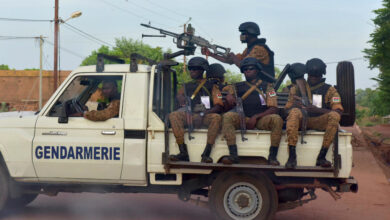
ICC To Investigate Fresh Allegations Of War Crimes By M23 Rebels In DRC
The International Criminal Court (ICC) on Thursday said it will examine war crimes allegations in the Democratic Republic of the…
Read More » -
Democratic Republic of the Congo
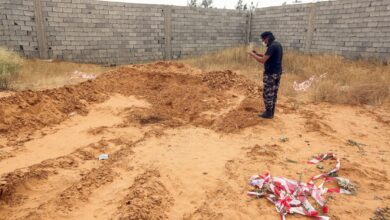
HRW Report Claims M23 Rebels Responsible For Mass Graves In Eastern DR Congo
Human Rights Watch (HRW) on Wednesday said the March 23 Movement (M23) rebels active in the Democratic Republic of Congo…
Read More » -
Democratic Republic of the Congo
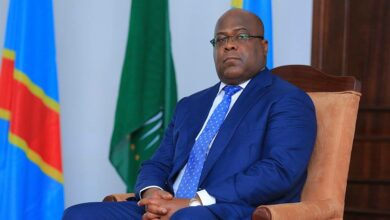
DRC Files New Complaint To ICC Against Rwandan Military And M23 Rebel Group
The Democratic Republic of Congo (DRC) on Tuesday made a referral plea to the International Criminal Court (ICC) to ensure…
Read More » -
Democratic Republic of the Congo

DRC President Felix Tshisekedi Slams Regional EACRF Force In East, Hints At June Exit
The Democratic Republic of Congo’s (DRC) President Felix Tshisekedi on Tuesday said the East African Community Regional Force (EACRF) would…
Read More » -
Democratic Republic of the Congo
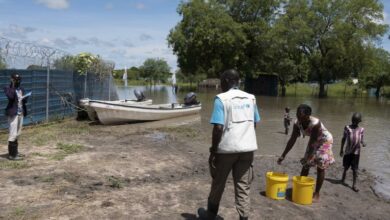
Flooding, Landslides Kill Over 400 In Democratic Republic Of Congo’s Kahele Region
Flooding and landslides due to heavy rains have killed nearly 400 people in the eastern part of the Democratic Republic…
Read More » -
Democratic Republic of the Congo
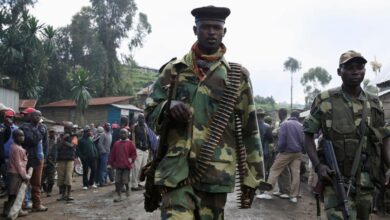
M23 Rebel Group Refuses To Disarm, Calls For Direct Political Dialogue With Government
The March 23 Movement (M23) rebel group, which is currently active in the Democratic Republic of Congo (DRC), has refused…
Read More » -
Democratic Republic of the Congo
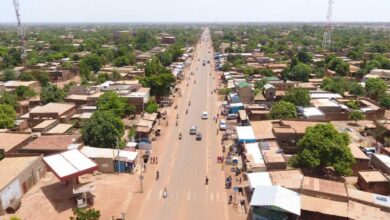
South Sudanese Troops Join Regional Force In Eastern DR Congo To Fight Rebels
South Sudanese troops on Sunday reached the Democratic Republic of Congo (DRC) to join a regional military force fighting the…
Read More » -
Democratic Republic of the Congo
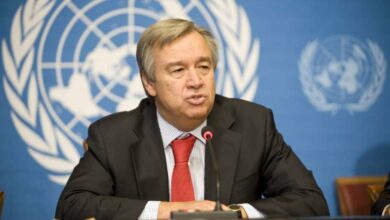
UN Secretary-General Expresses Concern Over Surge In Violence In Eastern Part Of DR Congo
The United Nations (UN) on Monday said an increase in militant attacks in the eastern part of the Democratic Republic…
Read More » -
Democratic Republic of the Congo

DRC President Requests French Counterpart To Pursue Sanctions Against Rwanda
The Democratic Republic of Congo’s (DRC) President Felix Tshisekedi has urged his visiting French counterpart Emmanuel Macron to pursue international…
Read More » -
Burundi
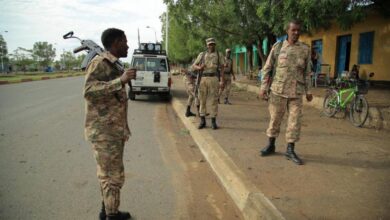
Burundian Government To Deploy 100 Soldiers To Conflict-Hit Eastern DR Congo
The Burundian government is set to deploy 100 soldiers to the volatile eastern part of the Democratic Republic of Congo…
Read More » -
Democratic Republic of the Congo
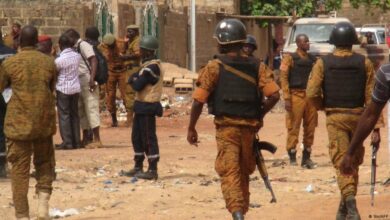
Rwanda’s Defense Ministry: Rwandan Forces Killed DRC Soldier Who Crossed Border
Rwanda’s Defense Ministry on Friday said a Congolese soldier, who crossed the border and shot at security forces, was shot…
Read More » -
Democratic Republic of the Congo

DRC President Felix Tshisekedi Says Unrest In East Could Disrupt December Polls
Democratic Republic of Congo’s (DRC) President Felix Tshisekedi on Monday said that the ongoing conflict with rebels in the eastern…
Read More » -
Democratic Republic of the Congo
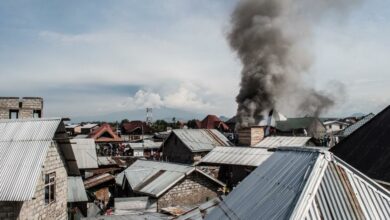
DRC Government Blames M23 Rebel Group For Attack On MONUSCO Helicopter
The Democratic Republic of Congo’s (DRC) government on Monday blamed M23 rebels for an attack on a helicopter that killed…
Read More » -
Democratic Republic of the Congo

UN Peacekeeping Mission Condemns M23 For Latest Offensive In DRC’s Kitshanga
The United Nations (UN) peace keeping mission in the Democratic Republic of the Congo (DRC) has condemned M23 rebels for…
Read More » -
Democratic Republic of the Congo
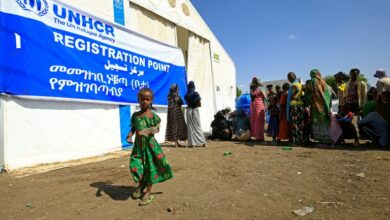
UNICEF Calls For Release Of 13 Children Abducted During An Attack In Eastern DRC
The United Nations children’s agency UNICEF on Friday called for the release of 13 children who were kidnapped during a…
Read More » -
Democratic Republic of the Congo
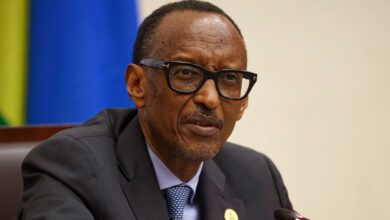
Rwandan Government Says DR Congo Fighter Jet Violated Its Airspace For Third Time
The Rwandan government on Tuesday said that a fighter jet from the Democratic Republic of Congo violated its airspace, prompting…
Read More » -
Democratic Republic of the Congo

UN Peacekeepers Find Mass Graves In DR Congo’s Eastern Ituri Province
The United Nations (UN) peace keepers on Wednesday announced they have discovered mass graves in the Democratic Republic of the…
Read More » -
Democratic Republic of the Congo

DRC President Felix Tshisekedi Accuses M23 Rebels Of Faking Agreed Pullback
The Democratic Republic of Congo (DRC) President Felix Tshisekedi on Tuesday said the M23 rebel group had not fully withdrawn…
Read More » -
Democratic Republic of the Congo
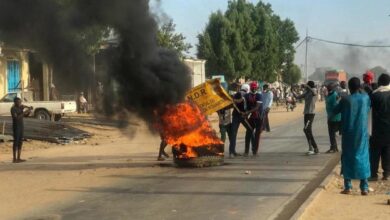
M23 Rebel Group Agrees To Continue Orderly Withdrawal From DRC- Says Kenyatta
The M23 rebel group has agreed to continue their orderly withdrawal from conquered territory in the eastern Democratic Republic of…
Read More » -
Democratic Republic of the Congo

DRC Condemns Rwanda For Refusing To Accept Refugees Fleeing Conflict In Eastern Part
The Democratic Republic of Congo (DRC) on Wednesday condemned Rwanda for saying it will no longer accept people fleeing conflict…
Read More » -
Democratic Republic of the Congo

M23 Rebel Group Withdraws From Captured Rumangabo Military Base In DRC
The M23 rebel group on Friday handed over the Rumangabo army base located in the Democratic Republic of Congo’s (DRC)…
Read More » -
Democratic Republic of the Congo

MONUSCO Launches New Mission In DR Congo To Protect Civilians From Conflict
The United Nations Organization Stabilization Mission in the Democratic Republic of the Congo (MONUSCO) has started a new operation in…
Read More » -
Democratic Republic of the Congo

EU Calls On Rwandan Government To Stop Supporting M23 Rebel Group
The European Union (EU) on Saturday called on the Rwandan government to cease support to the M23 rebel group, which…
Read More » -
Democratic Republic of the Congo

DRC Military Calls M23 Rebel’s Withdrawal From Strategic Town Near Goma A Sham
The Democratic Republic of Congo’s (DRC) military on Saturday called M23 rebel group’s withdrawal from a strategic town near the…
Read More » -
Democratic Republic of the Congo
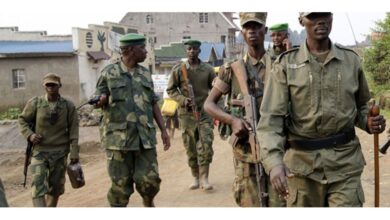
M23 Rebel Group Withdraws From Strategic Position In Eastern DR Congo
The Democratic Republic of Congo’s (DRC) M23 rebel group on Friday announced it has decided to withdrawn from a strategic…
Read More »

